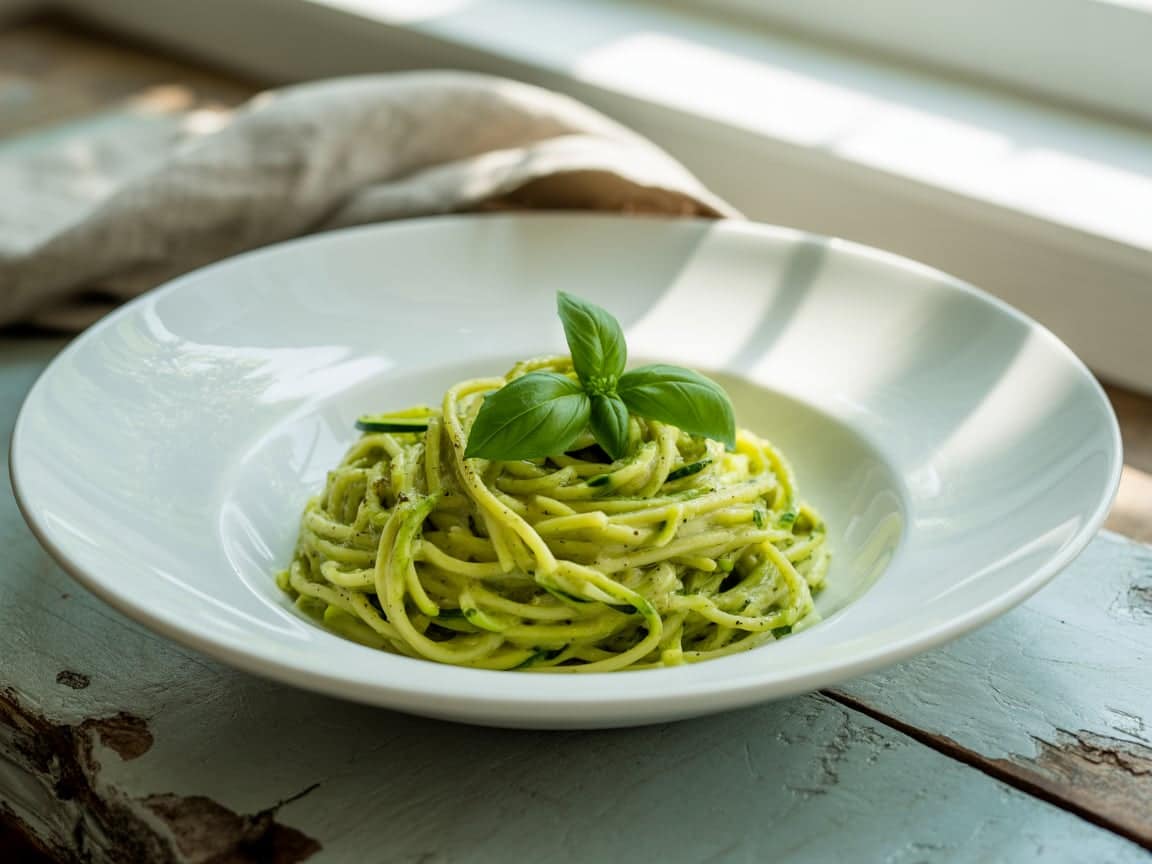Hickory smoked BBQ sauce has always had a way of pulling me back to my roots—back to the sizzle of summer grills, the smell of charred wood in the air, and the simple joy of making food from scratch. When I started Cozy Bites Recipes, it wasn’t just about sharing recipes—it was about recreating moments that mattered. My kitchen became a haven of memory and flavor, where smoky undertones told stories just as much as spices did.
Years ago, I found myself craving the kind of BBQ sauce that didn’t just coat the meat—but clung to it, kissed by smoke, sweetened just right, and rounded out with that bold kick. That craving sparked countless test batches in my small but mighty kitchen—some too sweet, some too tangy, and finally, one that hit all the right notes. That’s the version I’m sharing with you today.
In this article, I’ll take you deep into the world of hickory smoked BBQ sauce—from its unique flavor profile and origins to how you can make it at home with ingredients already in your pantry. Whether you’re new to smoking, a weekend griller, or just someone looking for a standout marinade, this guide has everything you need to bring bold, hickory-smoked flavor to your table.
Check out one of our most popular recipes to pair with hickory BBQ sauce: Discover great ideas like this tangy plant-based BBQ wrap
Table of Contents
What Is Hickory Smoked BBQ Sauce?
Definition and Ingredients of Hickory Smoked BBQ Sauce
At its core, hickory smoked BBQ sauce is a bold, sweet, and smoky condiment that owes its unmistakable flavor to hickory wood smoke. Unlike your typical BBQ sauce that may lean heavily on either sweetness or tang, this version achieves a smoky-sweet harmony that adds depth to everything from grilled ribs to roasted vegetables.
Hickory itself is a hardwood native to North America and has been used in traditional Southern barbecue for decades. Its smoke imparts a rich, earthy character to meats and sauces. When infused into a barbecue sauce—either through liquid smoke or actual smoked ingredients—it delivers a flavor that’s warm, woody, and slightly bacon-like.
A simple homemade version includes:
| Ingredient | Role in Flavor |
|---|---|
| Tomato sauce & paste | Rich base and thickness |
| Worcestershire sauce | Umami boost |
| Honey or maple/agave | Natural sweetness |
| Liquid smoke | Adds that signature hickory flavor |
| Garlic & onion powder | Savory depth |
| White vinegar | Tangy balance |
| Smoked paprika & chili powder | Complex smoky spice |
| Cayenne | Optional heat |
Learn more about building rich homemade sauces like this one: Check out this guide to scratch-made condiments
Origins and Popularity in American Barbecue Culture
Hickory smoked BBQ sauce finds its roots in Southern-style barbecue—especially in regions like Tennessee, Kentucky, and North Carolina where hickory wood is commonly used in smoking meats. Traditionally, barbecue isn’t just about taste—it’s about technique and storytelling. And the sauce, especially one made with hickory smoke, is a huge part of that narrative.
During the 20th century, as backyard barbecuing gained popularity across the U.S., the love for hickory flavor spread with it. Companies started bottling the flavor, adding liquid smoke to sauces to mimic the authentic pit-smoked experience. Today, hickory-smoked sauces are synonymous with hearty, robust barbecue that doesn’t shy away from flavor.
Whether used as a marinade, glaze, or dip, this sauce connects deeply with the traditions of slow cooking, family gatherings, and outdoor cookouts.
Flavor Profile – What Does Hickory Smoked BBQ Sauce Taste Like?
Smokiness and Sweetness Explained
Hickory smoked BBQ sauce is beloved for its bold and well-balanced flavor. At the first bite, you’re hit with a deep, smoky richness—a nod to the hickory wood smoke infusion. That smokiness isn’t just an afterthought; it’s front and center, wrapping around every ingredient like a campfire hug.
Following that bold introduction is a layer of sweetness that softens the edges. This sweetness usually comes from ingredients like honey, maple syrup, or agave, depending on your dietary preferences. It helps mellow the smokiness without overwhelming it, giving the sauce a velvety, sticky-sweet texture perfect for grilling.
The base of tomato sauce and paste gives it a hearty umami undertone, while a dash of vinegar brightens up the profile. Spices like garlic, paprika, and cayenne bring complexity and a touch of heat, creating a sauce that’s as versatile as it is flavorful.
Looking for inspiration? Try this smoky glaze in our baked BBQ cauliflower bites: Don’t miss our smoky vegan BBQ appetizer ideas
Comparing Hickory Smoke to Other Wood Flavors
When it comes to smoke flavor, not all woods are created equal. Hickory smoke delivers a strong, almost bacon-like flavor—robust enough to stand up to red meats like brisket and ribs, but still gentle enough for plant-based dishes when balanced correctly.
Here’s a quick comparison of common wood smoke flavors:
| Wood Type | Flavor Profile | Best For |
|---|---|---|
| Hickory | Bold, earthy, smoky, bacon-like | Ribs, brisket, sauces |
| Applewood | Sweet, mild | Chicken, pork, fruits |
| Mesquite | Intense, earthy, slightly bitter | Beef, game meats |
| Cherry | Slightly sweet, tart | Poultry, veggies, sauces |
| Oak | Medium smoky, neutral | All-purpose |
Hickory sits comfortably in the middle—it’s bolder than applewood but more balanced than mesquite. That’s why hickory smoked BBQ sauce feels so satisfying: it brings a sense of authenticity and richness to whatever it touches.
If you’re wondering what makes a store-bought BBQ sauce taste like it came from a pitmaster’s grill, it’s likely hickory smoke doing the heavy lifting.
Hickory Smoked BBQ Sauce vs. Original BBQ Sauce – What’s the Difference?
Flavor, Texture, and Color Comparison
While all BBQ sauces aim to deliver bold flavor, hickory smoked BBQ sauce brings something uniquely smoky and savory to the table. Let’s break down how it differs from the traditional or “original” BBQ sauces found on most grocery shelves:
| Feature | Hickory Smoked BBQ Sauce | Original BBQ Sauce |
|---|---|---|
| Flavor | Smoky, slightly sweet, rich, with deep earthy notes | Balanced sweet-tangy, mild spice, little to no smoke |
| Color | Darker reddish-brown, often deeper due to smoked paprika or chili | Lighter red to brown, depending on brand |
| Texture | Thick and sticky, perfect for glazing and clinging to grilled foods | Medium-thin to thick, smoother in texture |
| Aroma | Wood-smoke forward, evokes grilled or fire-cooked foods | Sweet and tangy, more like ketchup-based marinades |
The biggest flavor factor is smokiness. While original BBQ sauces rely heavily on sweetness and vinegar for their zing, hickory smoked BBQ sauce layers in that campfire-like warmth that comes from real or liquid smoke.
Plus, the extra spices like smoked paprika, cayenne, and chili powder give it a kick that original sauces often lack. It’s like the difference between roasted and raw vegetables—one is deeper, more complex, and undeniably more “cooked.”
Discover great ideas like this flavorful twist on smoky BBQ pasta: Check out our bold BBQ-inspired comfort dishes
Use Cases: When to Choose Hickory Over Classic
If you’re wondering when to use Hickory Smoked BBQ Sauce over a traditional BBQ sauce, the answer lies in what you’re cooking and the flavor intensity you want.
Choose hickory smoked BBQ sauce when:
- You’re grilling or smoking meats and want bold, smoky depth.
- You’re making jackfruit, tofu, or mushrooms and want to mimic grilled meat flavor.
- You want a sauce that can stand up to high heat without burning or separating.
- You need a marinade or glaze that clings well and caramelizes beautifully.
Opt for original BBQ sauce when:
- You want something lighter and sweeter, like for chicken nuggets or fries.
- You’re cooking for kids or spice-averse guests.
- You’re making a barbecue dip or dressing for cold dishes.
The bottom line? Hickory smoked BBQ sauce is your go-to when you want drama, depth, and that unmistakable grilled essence—even if you’re not near a fire.
How to Make Homemade Hickory Smoked BBQ Sauce
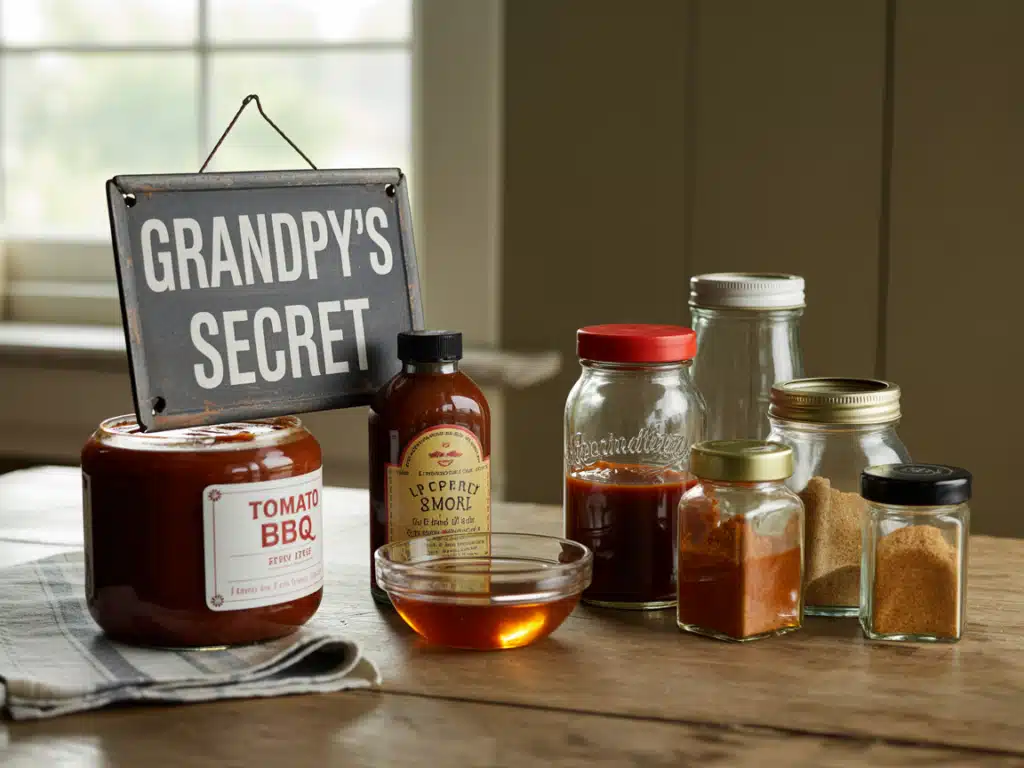
Step-by-Step Hickory Smoked BBQ Sauce Recipe with Common Ingredients
Making your own hickory smoked BBQ sauce at home is easier than you think—and it tastes far superior to most bottled versions. With just a few pantry staples, you can whip up a sauce that’s sweet, smoky, tangy, and customizable to your exact flavor preference.
Here’s the simple recipe I perfected in my kitchen:
Ingredients:
- ¾ cup tomato sauce
- 2 tbsp tomato paste
- 4 tsp honey or maple/agave syrup
- 2 tbsp Worcestershire sauce (or vegan substitute)
- 4 tsp white vinegar
- 2 tsp liquid smoke (hickory flavor)
- 1 tsp garlic powder
- 1 tsp onion powder
- 2 tsp smoked paprika
- 1 tsp chili powder
- ⅛ tsp cayenne pepper (optional for heat)
- ⅛ tsp salt (or to taste)
Instructions:
- In a medium bowl, combine all ingredients. Stir thoroughly until fully blended.
- For a deeper flavor, simmer the sauce on low heat for 10–15 minutes, stirring occasionally. This helps meld the flavors together beautifully.
- Let the sauce cool slightly, then transfer to a glass jar or airtight container.
- Store in the refrigerator for up to 2 weeks, or freeze for long-term storage.
This sauce works great as a marinade, grilling glaze, or a dipping sauce for everything from plant-based proteins to chicken wings.
Don’t miss our easy marinade hacks for smoky flavor: Check out this grilling and sauce prep guide
Customizing Heat, Sweetness, and Smokiness
Everyone’s BBQ preferences are different. That’s the beauty of homemade sauce—you get to tweak it your way.
Here are a few adjustment tips:
| Preference | What to Add |
|---|---|
| More heat | Add extra cayenne, hot sauce, or minced chipotle |
| Less sweet | Reduce honey/maple or increase vinegar |
| Extra tang | Add more vinegar or a splash of lemon juice |
| Deeper smokiness | Use an additional ½ tsp of liquid smoke |
| Richer thickness | Add more tomato paste or simmer longer |
Want it vegan? Just substitute Worcestershire sauce with a vegan version or soy sauce and a splash of balsamic for depth.
This flexible formula lets you tailor the sauce to your dish—whether you’re slathering it on pulled jackfruit sliders or brushing it over ribs.
Print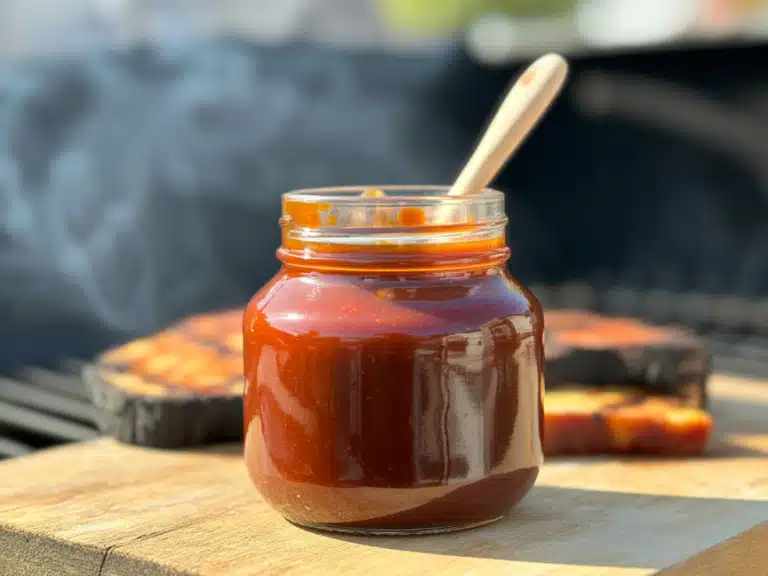
Hickory smoked BBQ sauce
Hickory smoked BBQ sauce delivers rich, smoky flavor—learn how to make, store, and use it for bold BBQ dishes.
- Total Time: 15 minutes
- Yield: 1.5 cups 1x
Ingredients
¾ cup tomato sauce
4 tsp honey or maple/agave syrup
2 tbsp Worcestershire sauce or vegan substitute
4 tsp white vinegar
2 tsp liquid smoke
1 tsp garlic powder
1 tsp onion powder
⅛ tsp Salt (or to taste)
2 tsp Smoked paprika
⅛ tsp Cayenne
2 tbsp tomato paste
1 tsp chili powder
Instructions
Mix all the ingredients in a bowl, making sure everything is well combined
Enjoy the sauce as a marinade or a dip for your BBQ nights!
- Prep Time: 5 minutes
- Cook Time: 10 minutes
Nutrition
- Serving Size: 1.5 cups
- Calories: 50
- Sugar: 11g
- Sodium: 300mg
- Carbohydrates: 13g
Best Uses for Hickory BBQ Sauce in Recipes
Grilling, Smoking, and Baking Applications
Hickory smoked BBQ sauce isn’t just a condiment—it’s a flavor powerhouse that transforms everyday dishes into smoky sensations. Whether you’re grilling over open flames or roasting in the oven, this sauce clings, caramelizes, and deepens flavor like no other.
Here are the top ways to use it:
1. Grilling
Slather it onto ribs, burgers, tofu slabs, or portobello mushrooms during the last 5–10 minutes of cooking. The sugars in the sauce caramelize beautifully, creating a sticky, flavorful crust.
2. Smoking
If you’re working with a smoker, use this sauce as a basting liquid. Apply it in layers throughout the smoking process, especially during the last hour, to build up a thick, smoky glaze.
3. Baking
Toss cauliflower, chickpeas, or meatballs in hickory BBQ sauce before roasting. You’ll get a crispy, smoky coating that feels like it came straight off the grill.
4. Stovetop Simmering
Mix the sauce into pulled jackfruit, seitan, or shredded chicken on the stovetop for a quick BBQ filling. Perfect for sliders, wraps, or bowls.
Looking for inspiration? Try this crowd-pleasing BBQ sandwich filling: Discover great ideas like our smoky jackfruit BBQ wraps
Top 5 Dishes That Pair Perfectly with Hickory Sauce
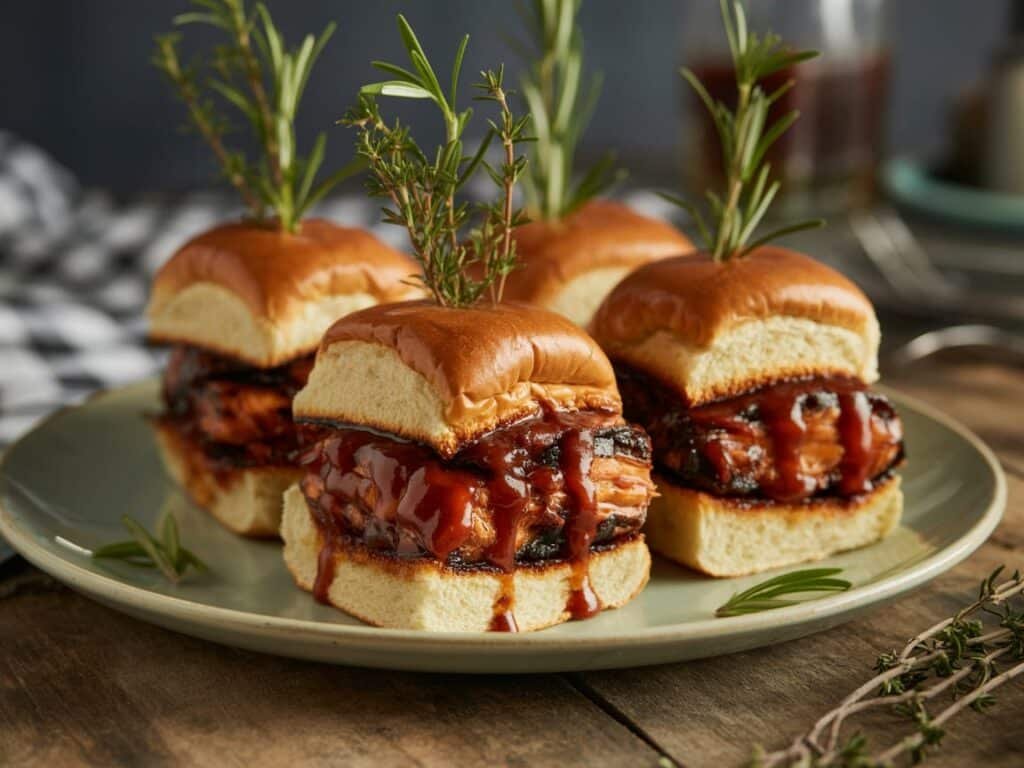
Hickory BBQ sauce shines when paired with hearty, bold-flavored ingredients. Here are my top five pairings:
| Dish | Why It Works |
|---|---|
| BBQ Jackfruit Sliders | The smoky sauce mimics real pulled pork texture and flavor |
| Grilled Tempeh Steaks | Tempeh soaks up the bold hickory notes and caramelizes well |
| Roasted Cauliflower Wings | Coated in sauce and crisped in the oven for a vegan delight |
| BBQ Chicken Thighs | Smoky, sticky, and satisfying—classic American BBQ |
| Baked BBQ Meatballs | Sauce binds and glazes them for a flavorful main or appetizer |
You can even drizzle it on flatbreads, tacos, or nachos to bring a bold BBQ twist to everyday meals. And don’t forget—it makes a phenomenal dip for sweet potato fries or roasted veggies.
Nutritional Facts and Dietary Substitutes
Calories, Sugars, and Vegan-Friendly Variants
Homemade hickory smoked BBQ sauce gives you full control over what goes into your body—no preservatives, no high-fructose corn syrup, and absolutely customizable for any diet. Here’s what you can expect nutritionally, based on the base recipe provided earlier:
Approximate Nutritional Breakdown (per 2 tbsp serving):
| Nutrient | Amount |
|---|---|
| Calories | 45–60 kcal |
| Sugar | 6–8g (depending on sweetener) |
| Sodium | 140–200mg (adjustable with salt/Worcestershire) |
| Fat | 0g |
| Carbs | 10–12g |
| Protein | 0.5g |
The majority of calories come from natural sugars in honey or maple syrup, and from the tomato base. If you’re using agave syrup, the glycemic index is a bit lower, which may help with blood sugar control.
Vegan tip: Replace Worcestershire sauce with a vegan alternative, or make your own with soy sauce, vinegar, molasses, and tamarind paste for that deep umami hit.
Using Natural Sweeteners and Low-Sodium Alternatives
If you’re aiming for a healthier version of hickory smoked BBQ sauce, small tweaks can make a big impact without compromising flavor.
To Reduce Sugar:
- Use unsweetened applesauce in place of half the sweetener.
- Add a pinch of stevia or monk fruit sweetener.
- Balance with extra vinegar or lemon juice to maintain tang.
To Lower Sodium:
- Use low-sodium tomato sauce.
- Make your own salt-free Worcestershire substitute.
- Add more herbs and spices like smoked paprika or cumin to intensify flavor without salt.
For Paleo or Whole30:
- Sweeten with dates or date syrup.
- Use coconut aminos in place of Worcestershire.
- Skip liquid smoke and opt for real wood-smoked ingredients (like smoked paprika).
The key takeaway? You don’t have to sacrifice flavor to eat clean. Hickory smoked BBQ sauce can be made to fit nearly any diet with the right substitutions.
Expert Tips for Cooking with Hickory Sauce
Marinating vs. Basting: Timing and Techniques
Cooking with hickory smoked BBQ sauce isn’t just about slathering it on—it’s about timing and technique. When used strategically, this bold, smoky sauce can elevate your dish from good to unforgettable.
Marinating: Let the Flavor Soak In
Use hickory smoked BBQ sauce as a marinade for both meats and plant-based proteins (like tempeh, tofu, or mushrooms). For best results:
- Marinate for at least 30 minutes, but up to 24 hours for maximum flavor.
- Cover and refrigerate the marinating item in a sealed container or zip-top bag.
- Avoid marinating too long if your sauce contains a lot of vinegar—it can affect texture.
Best for: Chicken thighs, tofu slabs, portobello mushrooms, jackfruit.
Basting: Build Flavor Layers
Basting involves brushing the sauce onto food while it cooks, usually on a grill or in the oven.
- Start basting during the last 5–10 minutes of cooking to prevent burning (sugar in the sauce can char quickly).
- Apply multiple thin coats instead of one thick layer for a sticky, glossy finish.
- Flip and reapply every few minutes to build up that beautiful glaze.
Best for: Ribs, burgers, baked cauliflower wings, seared seitan.
How to Layer Flavors Without Overpowering
Hickory smoked BBQ sauce is bold—but with boldness comes the responsibility to balance. Here’s how to let the sauce shine without overwhelming your dish:
1. Use Sauce Sparingly at First
Start with a light coating and build from there. Especially with grilled foods, a little goes a long way.
2. Pair with Neutral Bases
Let your sauce pop by pairing it with ingredients that don’t compete in flavor. Roasted sweet potatoes, grains, and white beans all make excellent companions.
3. Add Contrast
Balance the smokiness by including something tangy (like pickled onions), creamy (like coleslaw), or fresh (like herbs or citrus) in your meal.
4. Mix into Other Sauces
For something more subtle, blend your BBQ sauce into aioli, yogurt, or vinaigrettes to spread the flavor across different parts of the dish.
Remember, layering flavors is like building music—let the smoke be your bass note, and add brightness or texture to create a full, satisfying “chord.”
Store-Bought vs. Homemade Hickory BBQ Sauces
Top-Rated Brands You Can Buy
While nothing beats the depth and freshness of homemade hickory smoked BBQ sauce, there are some solid store-bought options if you’re in a pinch. The key is finding sauces that don’t load up on high-fructose corn syrup or artificial smoke.
Here are a few top-rated hickory BBQ sauces available in most U.S. grocery stores or online:
| Brand | Why It’s Popular | Notes |
|---|---|---|
| Stubb’s Hickory Bourbon BBQ | All-natural, no HFCS, bold smoke flavor | Great for grilling and basting |
| Sweet Baby Ray’s Hickory & Brown Sugar | Sweet and thick, kid-friendly | More sugary, less spicy |
| Annie’s Organic Smoky Maple BBQ | Organic and vegan-friendly | Lighter, great for dipping |
| Bone Suckin’ Sauce Hickory | Gluten-free, clean ingredients | Balanced and not overly smoky |
When choosing a store-bought version, read the label closely. Look for real ingredients like tomato paste, natural sweeteners, and natural hickory smoke. Avoid ones with long chemical-sounding additives—they can dull the real flavor you’re after.
Pros and Cons of Homemade Sauce from Scratch
Still wondering if making your own is worth it? Let’s compare the two options side-by-side:
| Aspect | Homemade Hickory Sauce | Store-Bought Sauce |
|---|---|---|
| Flavor | Customizable, fresh, intense smoke | Consistent, but sometimes artificial |
| Control Over Ingredients | Total control—sweetness, sodium, spice | Limited—often high sugar/sodium |
| Shelf Life | 1–2 weeks refrigerated (longer if frozen) | Up to a year unopened |
| Time & Effort | 10–15 minutes to prepare | Instant, no prep needed |
| Cost | Usually cheaper per batch | More expensive per ounce |
If you’re someone who loves full-bodied flavor and cooking with purpose, homemade sauce is the way to go. But when you’re low on time, having a go-to bottled version with clean ingredients is a smart backup.
Storage Tips and Shelf Life
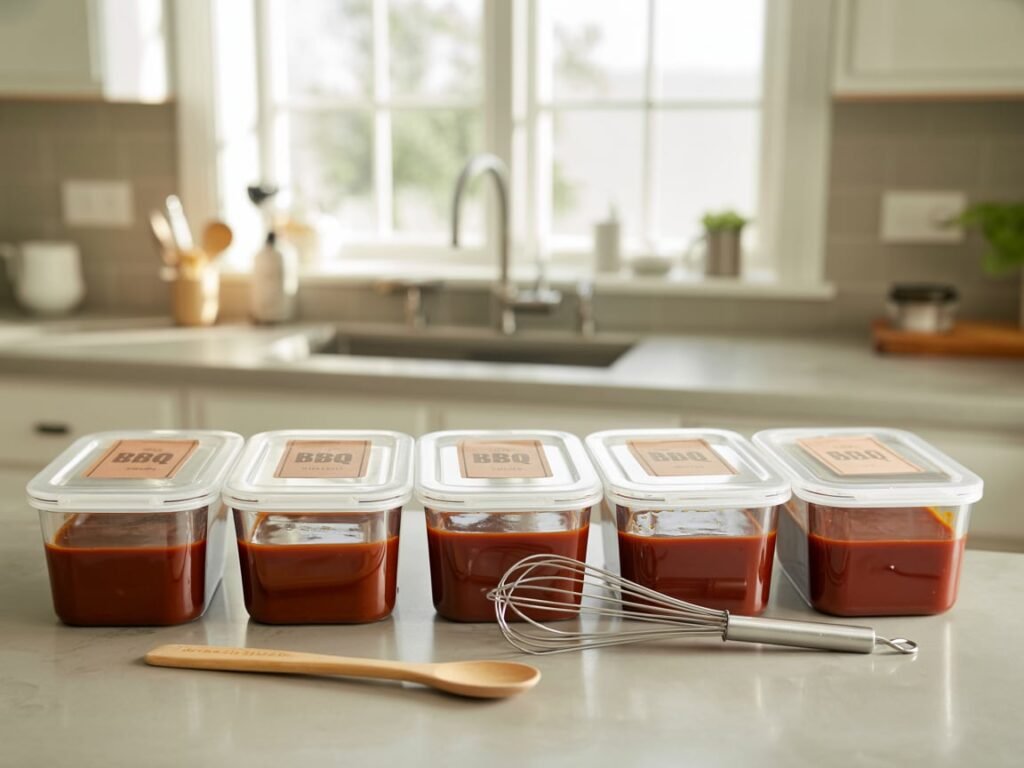
Refrigeration and Freezing Guidelines
One of the best things about homemade hickory smoked BBQ sauce is how well it stores—meaning you can make a batch ahead and enjoy smoky flavor anytime. That said, storing it properly is crucial to maintain freshness and food safety.
Refrigerator Storage:
- Shelf Life: 10–14 days
- Storage Method: Transfer the sauce to an airtight glass jar or a BPA-free plastic container. Label it with the date for easy tracking.
- Tip: Let the sauce cool completely before sealing and storing. This prevents condensation and preserves flavor.
Freezer Storage:
- Shelf Life: 3–4 months
- Storage Method: Use freezer-safe jars or silicone ice cube trays to freeze in portions.
- To Use: Thaw in the fridge overnight or microwave in 30-second intervals, stirring between each.
Pro Tip: If you made a big batch for summer BBQ season, freezing half is a smart move. Thawed sauce retains most of its flavor and texture if stored correctly.
Signs Your BBQ Sauce Has Gone Bad
Even well-stored BBQ sauce doesn’t last forever. Watch for these signs that your sauce has gone off:
| Sign | What It Means |
|---|---|
| Off smell | A sour or fermented smell indicates spoilage |
| Mold or separation | Especially near the lid—discard immediately |
| Color change | Darkening or odd hues could suggest oxidation |
| Fizzing or bubbling | Natural sauces shouldn’t ferment—throw it out |
To extend shelf life even further:
- Always use a clean spoon when scooping sauce.
- Keep it sealed tightly and stored in the coldest part of your fridge.
- Avoid cross-contamination by not dipping brushes or utensils directly into the storage jar during cooking.
Remember, fresh flavor starts with safe storage. When stored right, your hickory smoked BBQ sauce will be ready to elevate everything from weeknight dinners to backyard grill-outs.
Frequently Asked Questions (FAQs) About Hickory Smoked BBQ Sauce
What is hickory smoke barbecue sauce?
Hickory smoke barbecue sauce is a bold, sweet, and smoky condiment made using hickory wood smoke or liquid smoke extract. It’s crafted with a tomato-based foundation, enriched with sweeteners like honey or maple syrup, and spiced with ingredients such as smoked paprika, chili powder, and garlic. The defining characteristic is its robust smoky flavor, which mimics slow-cooked, pit-style barbecue even when used indoors or on non-smoked foods.
What is the difference between hickory and original BBQ sauce?
The key difference lies in the smokiness and intensity. Hickory BBQ sauce features a deeper, earthier flavor profile thanks to the addition of hickory smoke, giving it a wood-fired essence. Original BBQ sauce is usually milder, often sweeter and tangier, and lacks that strong, smoked character. Hickory sauce is ideal for hearty dishes like ribs or roasted jackfruit, while original BBQ suits lighter fare and broader palates.
What does hickory smoked BBQ taste like?
Hickory smoked BBQ delivers a rich, savory flavor with hints of wood-fired smoke, caramelized sugars, and umami from ingredients like Worcestershire or tamari. The smoke adds complexity and depth, with subtle notes of bacon or campfire char. The sweetness balances the bitterness of the smoke, resulting in a satisfying, well-rounded taste that lingers on the palate.
What does hickory barbecue sauce taste like?
Hickory barbecue sauce tastes smoky, slightly sweet, tangy, and bold. The hickory smoke gives it a hearty, grilled essence, while sweeteners and vinegar offer a balanced flavor. You’ll notice layers—starting with a touch of tang, then sweetness, followed by a savory depth that finishes with a gentle smoky heat. It’s especially delicious when used as a glaze on grilled or roasted foods.
Conclusion: Hickory Smoked BBQ Sauce
Hickory smoked BBQ sauce is more than just a condiment—it’s a celebration of flavor. From its deep roots in Southern barbecue traditions to the flexibility of crafting your own homemade version, this sauce brings smoky, bold personality to every meal. Whether you’re marinating, basting, grilling, or just dipping, you now have all the tools to make this sauce your own.




